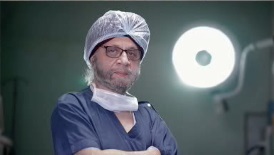Appendicitis - Know Best Mode Of Treatment!
Appendicitis refers to an inflammation of the appendix – a small, pouch-like structure attached to the first part of the rectum or colon in the lower right side of the abdomen. This may be an acute or chronic condition.
A person having appendicitis will develop the following symptoms –
- Pain in the upper or lower right side of the abdomen
- Swelling in the abdomen
- Indigestion
- Vomiting and nausea
- Loss of appetite
- Diarrhoea
- Constipation
- Mild fever
- Inability to pass gas
If appendicitis is left untreated, the inflammation may cause your appendix to burst, leading to the spillage of bacteria in the abdominal cavity. This may turn out to be more serious and sometimes fatal.
In case, you feel tenderness in the right side of your lower abdomen and experience any of the above symptoms, consult a doctor for immediate assistance. Appendicitis may become a medical emergency in no time but it is certainly curable.
What are the most effective treatment options for appendicitis?
The most effective modes of treatment for appendicitis are antibiotics and surgery.
-
Appendectomy - Appendectomy is a procedure wherein the appendix is removed surgically. It is recommended when the opening of the appendix has become clogged with stool and bacteria and has led to an infection causing swelling and inflammation. The surgeon may perform an open surgery, wherein a couple of incisions are made in the right portion of the lower abdomen, the appendix is removed and the wound is then closed with stitches. This allows the surgeon to clean the abdominal cavity in case the appendix has ruptured. Alternatively, your surgeon may choose to perform a laparoscopic surgery. This procedure involves making a few small incisions in the abdomen and inserting a narrow tube-like structure called a cannula to inflate the abdomen with carbon dioxide gas. This allows the surgeon to have a clearer view of the abdominal cavity. Next, a laparoscope – a thin, long tube with a high-resolution camera and high-intensity light attached to it – is inserted through the incisions. The images displayed on the monitor helps guide the surgeon through the procedure. The infected appendix is stitched off and removed, and the incisions cleaned, closed and dressed carefully. Laparoscopic surgery is a better and more preferred treatment option due to the minimal risks of bleeding, infections and pain associated with it.
-
Needle drainage - This refers to the procedure of draining the abdominal abscess and pus. The surgeon makes a clean cut in the abdomen to locate and clean the abscess. Once it is cleaned and the pus is drained out, the abscess takes a few days or weeks to heal.
-
Antibiotics - If you have acute appendicitis, meaning the appendix has not ruptured yet, you may not have to undergo a surgery at all. In this case, the best mode of treatment is antibiotics. Antibiotic medications start working right from the first time you take them. These fight off bacteria by killing them or suspending and slowing their growth. Besides, there are no serious complications associated with antibiotic therapy. Studies show that nearly 70-80% of people with appendicitis may only need antibiotics to recover from acute appendicitis.
Whether you opt for a surgery or take antibiotics for appendicitis, your doctor will likely prescribe a liquid diet to allow easy digestion. Pain relievers may be prescribed post surgery to reduce pain and discomfort. You may have to follow up with your doctor after a surgery just to eliminate the risk of infections.



+1.svg)
